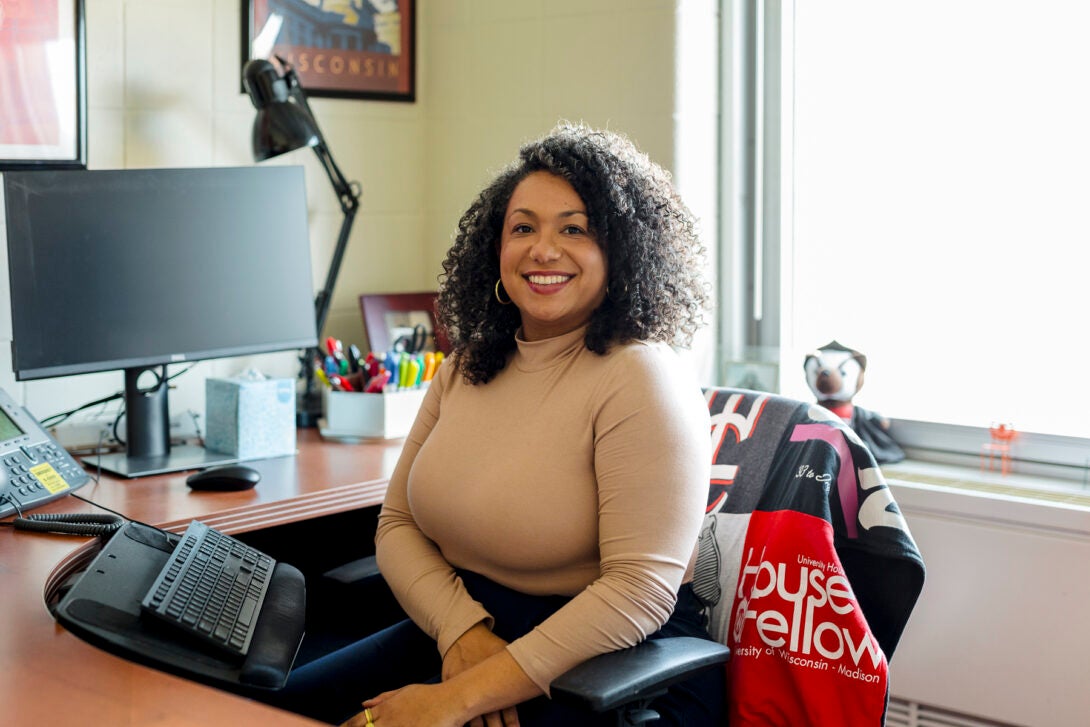Enlisting dads to help improve Black girls’ reproductive health
body copy

The statistics are stark: Nationally, 1 in 4 Black girls between the ages of 14 and 19 will acquire a sexually transmitted infection. In Chicago, STI rates among Black girls and women are higher than for other racial groups, with 13- to 29-year-olds making up 56% of new HIV diagnoses.
Assistant professor Natasha Crooks, PhD, RN, wants to help improve Black girls’ sexual and reproductive health by empowering an often-overlooked resource: girls’ male caregivers. These could be their dads, brothers, uncles, cousins or other caring men in a girl’s life.
With the help of a $4 million, five-year grant from the National Institute on Minority Health and Health Disparities, Crooks is testing out a two-day workshop for girls and their male caregivers designed to help them understand and more comfortably discuss female reproductive and sexual health.
“There’s literally no other programming that engages male caregivers,” for girl’s sexual and reproductive health, Crooks said. “It’s dads and boys, and moms and girls. But that’s doing a disservice. What about the dads who really want to be involved? It shouldn’t be this awkward, uncomfortable conversation.”
Wanting to hear from men
Developing the curriculum, called IMAGE, started with Crooks’ dissertation. For that project, she interviewed Black women to create a theoretical framework that describes the process of becoming a sexual Black woman.
“The women were talking a lot about how experiences in their childhood really influenced their sexuality. So I decided I needed to interview girls,” she said.
When she did, girls told her they wanted more support and protection, “with many specifically telling me they wanted to hear the male perspective on how they could better protect themselves.”
Out of that work, IMAGE was born.
Enlisting dads to help improve Black girls’ sexual and reproductive health
Crooks adapted IMAGE from another curriculum, called IMARA, which was developed by her mentor, Geri Donenberg at UIC’s College of Medicine. IMARA — Informed, Motivated, Aware and Responsible about AIDS — is a two-day workshop for Black girls and their female caregivers to help prevent HIV infections. Crooks tailored it for male caregivers.
Programs like IMARA and IMAGE (which stands for IMARA for Black Male Caregivers and Girls Empowerment) focus on Black girls because of their high risk for STIs and HIV. This is partly because, while all girls are starting puberty earlier than in the past, Black girls are often among the youngest, beginning puberty around age 9. This leads to adultification, with Black girls being treated as older than they are and being approached by older men as sexual partners, Crooks said. Having an older sexual partner correlates with elevated risk for sexual violence, STIs and HIV, she added. There are also cultural norms that may discourage birth control use or protective behaviors such as condom use, and that can increase Black girls’ risks of STIs and HIV.
Men often know more about female reproductive health than they get credit for, Crooks said. Still, IMAGE includes lessons on female reproductive biology — what is a uterus, how does menstruation work — which many men said they lacked a full understanding of.
The bulk of IMAGE focuses on improving communication and creating more comfort when talking about the potentially fraught topics of sex, bodies and relationships.
Crooks and her colleagues — Donenberg; Phoenix Matthews, formerly at UIC and now at Columbia University; and Crystal Patil, formerly at UIC and now at the University of Michigan — piloted IMAGE two summers ago with 40 pairs of girls and caregivers at the North Lawndale AMACHI Mentoring Program. Both men and girls in the program said IMAGE helped them overcome a lot of discomfort in talking about these topics.
“They’re able to communicate a little better, and it improves their relationship,” Crooks said.
Crooks learned that men in the program wanted to include topics that stem from structural racism, such as the disproportionate rate of incarceration and lack of positive male role models for Black men. So, for example, IMAGE includes discussions of how incarcerated men can still help guide and protect the girls in their lives.
And after the pilot program, many of the men wanted to keep talking with each other about issues like mental health in a space that felt safe, which Crooks helped establish at the North Lawndale site.
New project this summer
Beginning this summer, Crooks and her colleagues will partner with six community-based organizations that serve predominantly Black areas on the South and West sides of Chicago. To further test the effectiveness of IMAGE, they hope to recruit 300 girls and their male caregivers who will be randomly assigned to participate in IMAGE or a different health program. Both two-day programs are held on Saturdays and Sundays.
The researchers will compare outcomes for girls in the two groups. They’ll look at risk factors for STIs, such as condom use and the number of sexual partners a girl has, as well as incidences of STIs six months and 12 months after the program. They aim to use what they learn to improve IMAGE, which they hope will continue to be offered by the community partners.
“The goal is that the community owns this program,” Crooks said, “and will continue to run IMAGE without us.”
You can visit the IMAGE website to learn more about the study. Those interested in enrolling can email the researchers at image@uic.edu.
Courtesy of Emily Stone | UIC Today